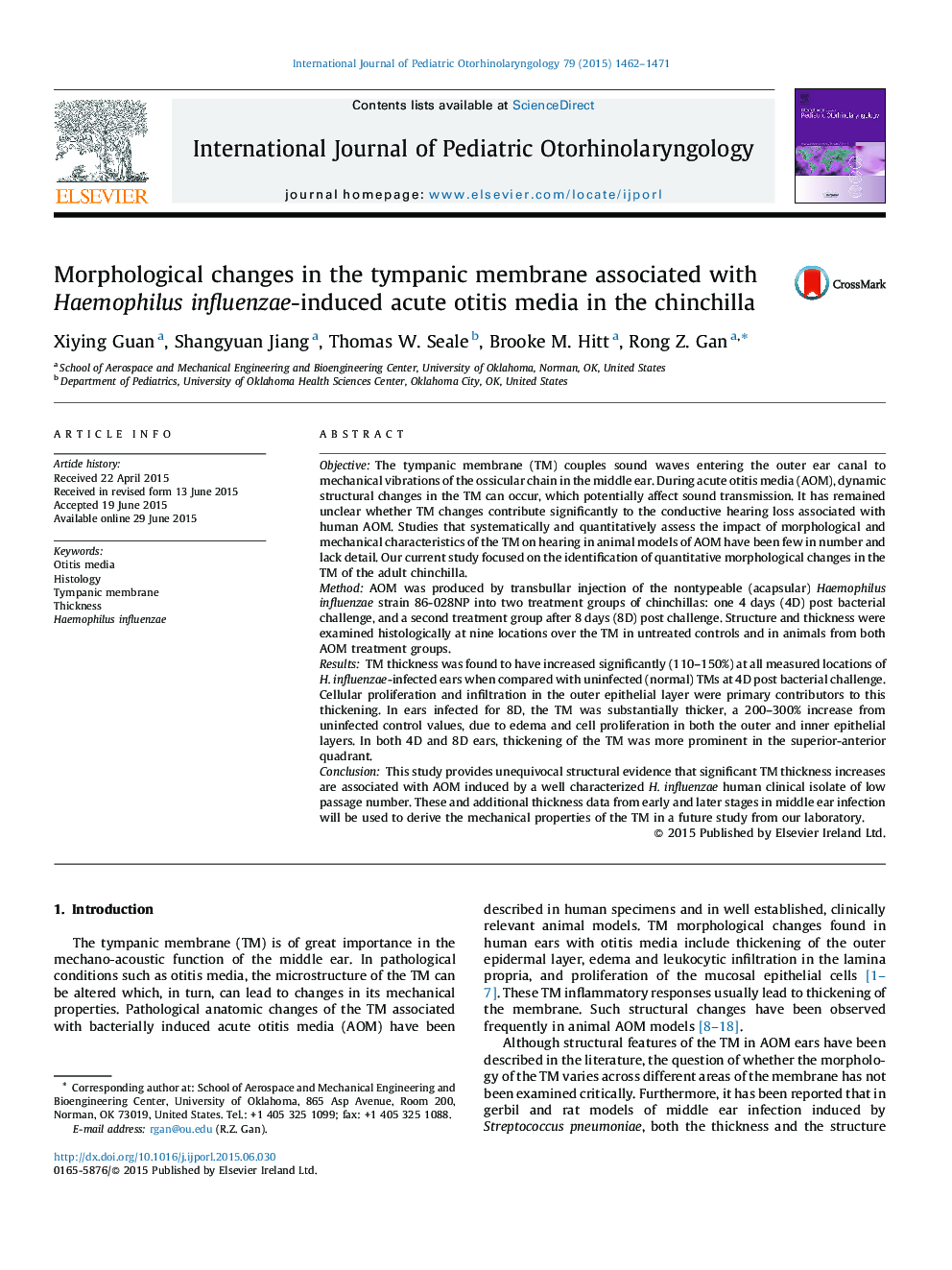| Article ID | Journal | Published Year | Pages | File Type |
|---|---|---|---|---|
| 4112091 | International Journal of Pediatric Otorhinolaryngology | 2015 | 10 Pages |
ObjectiveThe tympanic membrane (TM) couples sound waves entering the outer ear canal to mechanical vibrations of the ossicular chain in the middle ear. During acute otitis media (AOM), dynamic structural changes in the TM can occur, which potentially affect sound transmission. It has remained unclear whether TM changes contribute significantly to the conductive hearing loss associated with human AOM. Studies that systematically and quantitatively assess the impact of morphological and mechanical characteristics of the TM on hearing in animal models of AOM have been few in number and lack detail. Our current study focused on the identification of quantitative morphological changes in the TM of the adult chinchilla.MethodAOM was produced by transbullar injection of the nontypeable (acapsular) Haemophilus influenzae strain 86-028NP into two treatment groups of chinchillas: one 4 days (4D) post bacterial challenge, and a second treatment group after 8 days (8D) post challenge. Structure and thickness were examined histologically at nine locations over the TM in untreated controls and in animals from both AOM treatment groups.ResultsTM thickness was found to have increased significantly (110–150%) at all measured locations of H. influenzae-infected ears when compared with uninfected (normal) TMs at 4D post bacterial challenge. Cellular proliferation and infiltration in the outer epithelial layer were primary contributors to this thickening. In ears infected for 8D, the TM was substantially thicker, a 200–300% increase from uninfected control values, due to edema and cell proliferation in both the outer and inner epithelial layers. In both 4D and 8D ears, thickening of the TM was more prominent in the superior-anterior quadrant.ConclusionThis study provides unequivocal structural evidence that significant TM thickness increases are associated with AOM induced by a well characterized H. influenzae human clinical isolate of low passage number. These and additional thickness data from early and later stages in middle ear infection will be used to derive the mechanical properties of the TM in a future study from our laboratory.
